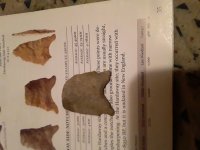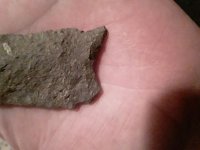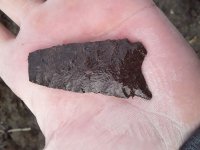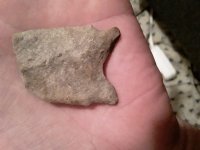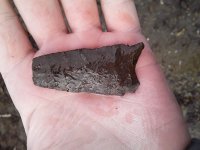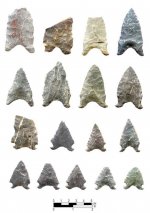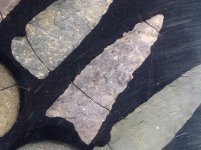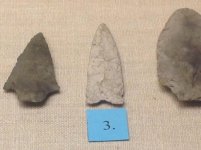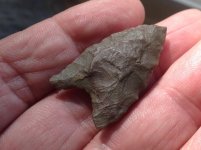Edgychris1
Sr. Member
Hi Folks,
Here is a couple pieces from a few months back. They have the trademarks of what I think a Dalton is, however was told it is a Brewerton, "Most Likely."
First time I uploaded these ones here.
How do I differentiate the Dalton vs Brewerton, when it comes to these funky ears??
I am certain the quartzite one is a Dalton. I know entire specimen not available, do not know for sure.
I also was told red rhyolite one was a Brewerton. I know one ear is missing but those basses look very close to me. Basel grinding, funky ears ecetra. I was told geography and other finds from same area play a big part. Like what else do I find in this Area? I've found numerous types together with rare ones in this spot. Ie parallel stem, possible Kirk. I've also found Lamoka, Neville, Snappit, Levanna, Stark, Fox Creek, Wading River, Beekman, and a dozen other types ranging from 900bp to possible 10000bp in this same area within 100 yards. So how can I really tell?
A little over a year ago, Charl mentioned that Ritche perhaps misnamed the Dalton of the RI/MA area. Does this Red one fall into this category?
Any input on these pieces?
Brewerton?
Dalton?
Thanks
Chris
Here is a couple pieces from a few months back. They have the trademarks of what I think a Dalton is, however was told it is a Brewerton, "Most Likely."
First time I uploaded these ones here.
How do I differentiate the Dalton vs Brewerton, when it comes to these funky ears??
I am certain the quartzite one is a Dalton. I know entire specimen not available, do not know for sure.
I also was told red rhyolite one was a Brewerton. I know one ear is missing but those basses look very close to me. Basel grinding, funky ears ecetra. I was told geography and other finds from same area play a big part. Like what else do I find in this Area? I've found numerous types together with rare ones in this spot. Ie parallel stem, possible Kirk. I've also found Lamoka, Neville, Snappit, Levanna, Stark, Fox Creek, Wading River, Beekman, and a dozen other types ranging from 900bp to possible 10000bp in this same area within 100 yards. So how can I really tell?
A little over a year ago, Charl mentioned that Ritche perhaps misnamed the Dalton of the RI/MA area. Does this Red one fall into this category?
Any input on these pieces?
Brewerton?
Dalton?
Thanks
Chris
Amazon Forum Fav 👍
Attachments
Last edited:
Upvote
0


